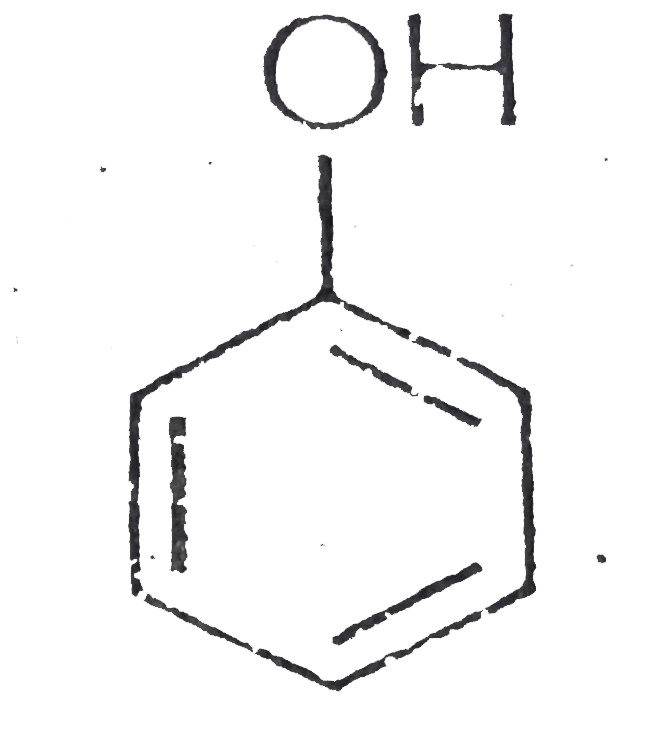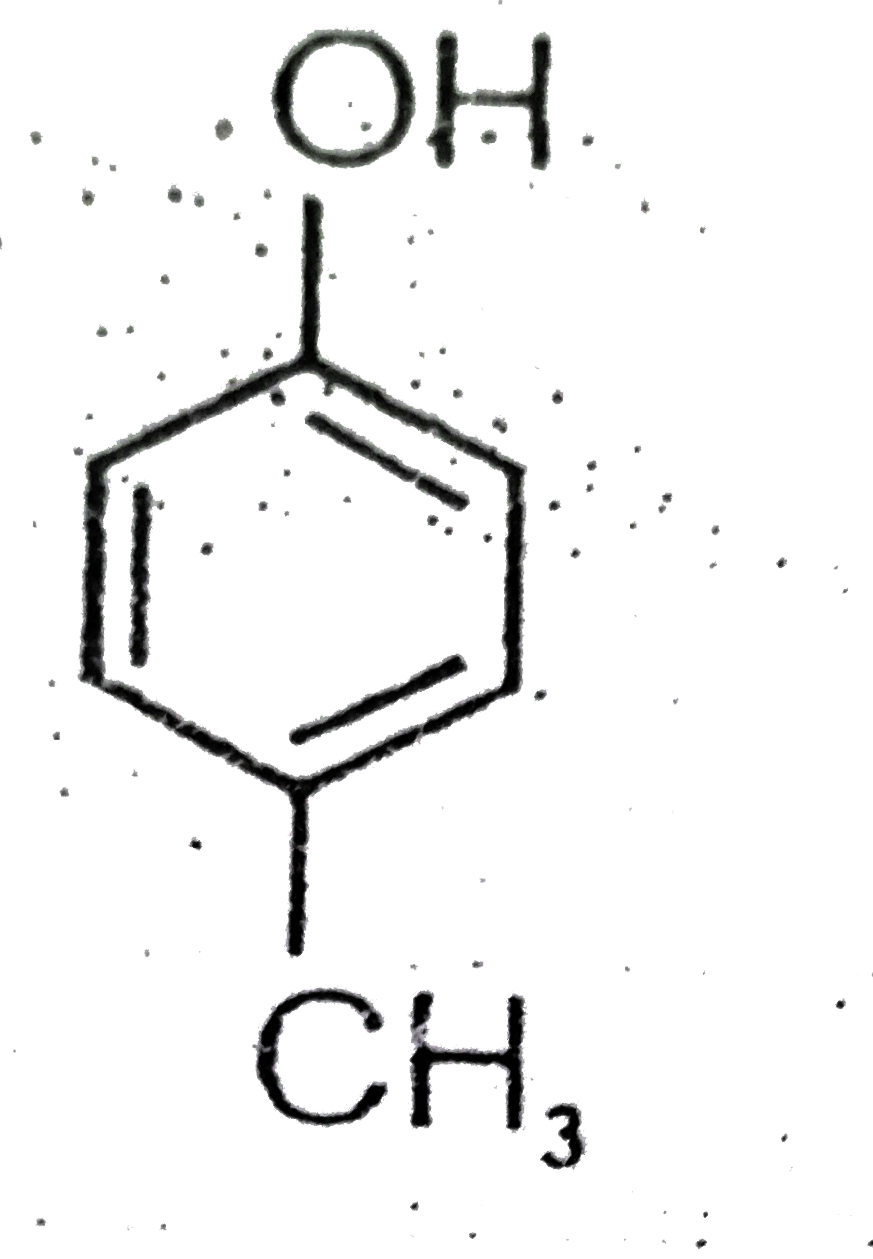Weak Acid does not dissociate completely into its ions. It is in equilibrium with its conugate base. Greater is the stability of conjugate base, greater is value of k for that equilibrium making the equilibrium move in (HaK⇐⇒H+A−) forward direction i.e. more is the degree of dissociation of that acid. Same is the case for weak bases. Factors affecting the stability of conjugate acid or base are electronic effect like resonance effect and inductive effect acting upon the species.
Which of the following is strongest acid?




The correct Answer is:A
To determine which of the given options is the strongest acid, we need to analyze the stability of the conjugate bases formed from the acids in question. The stability of the conjugate base is crucial because a more stable conjugate base corresponds to a stronger acid.
1. Understanding Weak Acids and Their Conjugate Bases:
- Weak acids do not completely dissociate in solution and exist in equilibrium with their conjugate bases. The equilibrium can be represented as:
HAK⇌H++A−
- Here, HA is the weak acid, H+ is the proton, and A− is the conjugate base.
2. Factors Affecting Acid Strength:
- The strength of an acid is influenced by the stability of its conjugate base. Greater stability of the conjugate base leads to a larger equilibrium constant Ka and thus a stronger acid.
- Stability can be affected by electronic effects such as resonance and inductive effects.
3. Analyzing the Given Options:
- The options provided are variations of phenol with methyl substitutions at ortho, meta, and para positions.
- We need to evaluate how these substitutions affect the stability of the phenoxide ion (the conjugate base of phenol).
4. Resonance Structures of Phenoxide Ion:
- When phenol loses a proton, it forms the phenoxide ion. The negative charge on the oxygen can be delocalized through resonance across the aromatic ring.
- The resonance structures show that the negative charge can be distributed over the ortho and para positions, stabilizing the conjugate base.
5. Effect of Methyl Substituents:
- Methyl groups are electron-donating due to the inductive effect.
- If a methyl group is at the ortho or para position, it increases electron density at those positions, which can destabilize the negative charge on the conjugate base (phenoxide ion).
- Conversely, a methyl group at the meta position does not significantly affect the resonance structures of the phenoxide ion.
6. Conclusion on Acid Strength:
- The phenoxide ion formed from unsubstituted phenol is highly stable due to resonance.
- Substituting methyl groups at the ortho or para positions destabilizes the conjugate base due to increased electron density.
- Therefore, the phenol without any methyl substitution (or with methyl at the meta position) will be the strongest acid.
Final Answer:
The strongest acid among the given options is A) Phenol.
- Weak acids do not completely dissociate in solution and exist in equilibrium with their conjugate bases. The equilibrium can be represented as:
HAK⇌H++A−
- Here, HA is the weak acid, H+ is the proton, and A− is the conjugate base.
- The strength of an acid is influenced by the stability of its conjugate base. Greater stability of the conjugate base leads to a larger equilibrium constant Ka and thus a stronger acid.
- Stability can be affected by electronic effects such as resonance and inductive effects.
- The options provided are variations of phenol with methyl substitutions at ortho, meta, and para positions.
- We need to evaluate how these substitutions affect the stability of the phenoxide ion (the conjugate base of phenol).
- When phenol loses a proton, it forms the phenoxide ion. The negative charge on the oxygen can be delocalized through resonance across the aromatic ring.
- The resonance structures show that the negative charge can be distributed over the ortho and para positions, stabilizing the conjugate base.
- Methyl groups are electron-donating due to the inductive effect.
- If a methyl group is at the ortho or para position, it increases electron density at those positions, which can destabilize the negative charge on the conjugate base (phenoxide ion).
- Conversely, a methyl group at the meta position does not significantly affect the resonance structures of the phenoxide ion.
- The phenoxide ion formed from unsubstituted phenol is highly stable due to resonance.
- Substituting methyl groups at the ortho or para positions destabilizes the conjugate base due to increased electron density.
- Therefore, the phenol without any methyl substitution (or with methyl at the meta position) will be the strongest acid.
The strongest acid among the given options is A) Phenol.
Topper's Solved these Questions
- ORGANIC CHEMISTRY: SOME BASIC PRINCIPLE AND TECHNIQUESBOOK - AAKASH INSTITUTE ENGLISHCHAPTER - ORGANIC CHEMISTRY: SOME BASIC PRINCIPLE AND TECHNIQUESEXERCISE - SECTION-E ASSERTION-REASON TYPE QUESTIONS
14 Videos
- ORGANIC CHEMISTRY: SOME BASIC PRINCIPLE AND TECHNIQUESBOOK - AAKASH INSTITUTE ENGLISHCHAPTER - ORGANIC CHEMISTRY: SOME BASIC PRINCIPLE AND TECHNIQUESEXERCISE - SECTION-F MATRIX-MATCH TYPE QUESTIONS
4 Videos
- ORGANIC CHEMISTRY: SOME BASIC PRINCIPLE AND TECHNIQUESBOOK - AAKASH INSTITUTE ENGLISHCHAPTER - ORGANIC CHEMISTRY: SOME BASIC PRINCIPLE AND TECHNIQUESEXERCISE - SECTION-C OBJECTIVE TYPE QUESTION (MORE THAN ONE OPTIONS ARE CORRECT)
18 Videos
- ORGANIC CHEMISTRY : SOME BASIC PRINCIPLES AND TECHNIQUES BOOK - AAKASH INSTITUTE ENGLISHCHAPTER - ORGANIC CHEMISTRY : SOME BASIC PRINCIPLES AND TECHNIQUES EXERCISE - Assignment(Section-D)(Assertion - Reason Type Questions)
15 Videos
- POLYMERSBOOK - AAKASH INSTITUTE ENGLISHCHAPTER - POLYMERSEXERCISE - ASSIGNMENT (SECTION-D)
13 Videos
Similar Questions
Knowledge Check
Conjugate base of a strong acid is
Aa weak baseBa strong baseCneutralDa weak acid.
Which of the following are conjugate acid-base pairs ?
View SolutionAt infinite dilution, the percentage dissociation of both weak acid and weak base is:
View SolutionWhich among the following is not a a conjugate acid base pair?
View SolutionThe dissociation constant of a base MOH is 4×10−6 then calculate the dissociation constant of its conjugate acid
View SolutionThe dissociation constant of a base MOH is 4×10−6 then calculate the dissociation constant of its conjugate acid
View SolutionThe conjugate of a strong acid is always a weak base.
View SolutionWhich one of the following is not acid-base conjugate pair ?
View Solution
